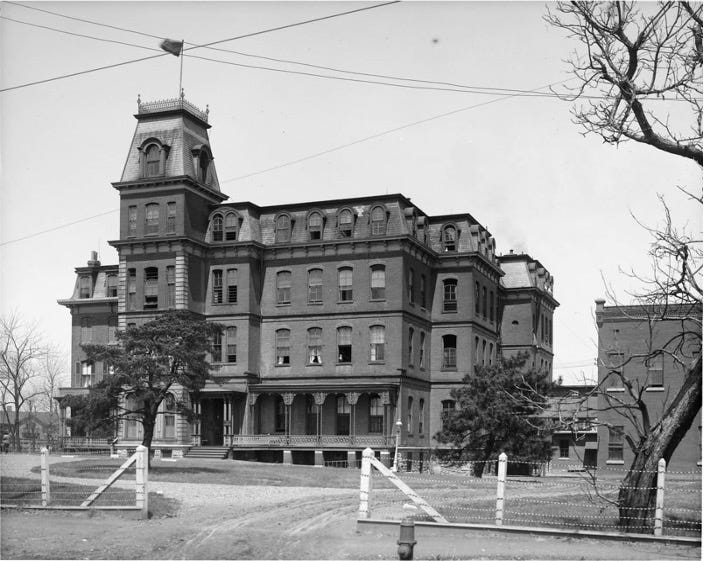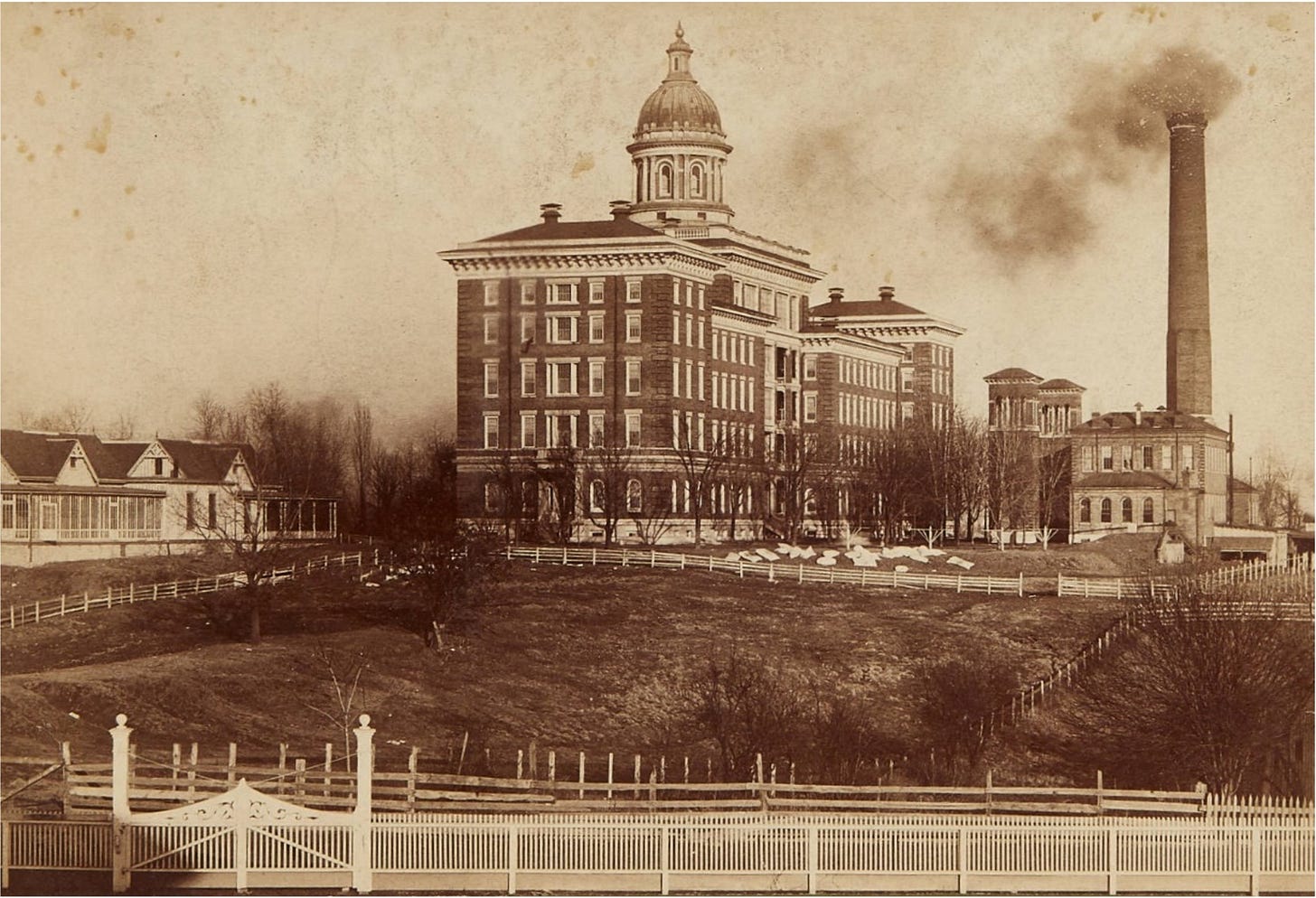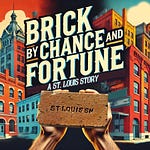In November, the Unseen STL History Talks brought together two captivating speakers who explored a variety of stories from our city’s past. Through the lens of historical maps and the stories of the city’s most vulnerable populations, the talks delved into how the physical and social landscapes of St. Louis have evolved over time. From examining the maps that shaped the city’s growth to uncovering the histories of forgotten institutions, the evening offered new perspectives on the people and places that have defined St. Louis history.

19th-century poor houses & the treatment of mental health
Joe Squillace’s talk offered a poignant look into the history of poverty and institutional care in St. Louis during the 19th and early 20th centuries. He examined the impact of the Poor Laws, which shaped societal perceptions of poverty and influenced how individuals were classified as "deserving" or "undeserving" of assistance. Deserving individuals were those willing to work but unable to, while the undeserving were viewed as choosing idleness. Joe traced the development of poor houses in St. Louis, from their early location in Marine Villa near the Mississippi River to their relocation to "Poverty Hill" (today’s Hill neighborhood), shedding light on the role these institutions played in addressing the city’s growing needs. He also touched on the heartbreaking reality that many children ended up in these facilities due to family poverty, parental illness, or as children of patients.
The talk also explored how women and marginalized groups were treated in these institutions, including the Hospital for Social Evils (later the Female Hospital), which initially housed prostitutes but then cared for women who had no other options. Joe discussed how societal attitudes shaped the care—or lack thereof—given to individuals with developmental disabilities and mental health conditions, highlighting the stigma and challenges they faced. Through his research, Joe brought to light the forgotten lives of St. Louis’s most vulnerable, offering a powerful reminder of the complex social fabric that has shaped the city’s history.
For more information on this topic, Joe has published three books: The Untold History of the First Illinois State Hospital for the Insane (2020), A History of the Poorhouse and Farm in Morgan County, Illinois (2017), and The Tenants Rights Manual (1999). Look for his new book, Over the Hills to Saint Louis’ Poverty Hill: A Short History of How Three City Institutions Served the Poor and Mentally Ill, 1819-1923, to be out soon. Discover more about his research and publications at drjoesresearchpage.com.
You can view his slides below:
Mapping St. Louis
Andy Hahn’s presentation explored the history of St. Louis through the lens of rare historical maps, including those featured in his book Mapping St. Louis: A History of the Gateway City in 40 Rare Maps.
He demonstrated how maps are more than geographic tools, as they reflect the region’s shifting priorities and challenges over time. Andy discussed maps’ roles in navigation, city planning, and storytelling. These maps, spanning from the founding of St. Louis in the mid-18th century to the present, depicted key themes in our city’s history, including its founding during the Colonial era, its role as a hub for the fur trade and westward expansion, and its growth as a major port and manufacturing center. Andy emphasized the strategic importance of St. Louis during significant events like the Civil War and explained how maps from these eras showcased the city’s infrastructure, such as fortifications and steamboat ports. Notably, maps documenting Robert E. Lee’s work to preserve the St. Louis harbor highlighted early engineering efforts to maintain the city’s dominance in river trade. His talk also delved into the challenges of urban growth and regional cooperation. Andy explored repeated yet unsuccessful efforts to reunify the city and county, from annexation proposals in 1926 to plans for borough-style governance in the 1960s.
Andy is the Director of the Campbell House Museum. You can follow the museum on Facebook, Instagram, and YouTube, and be sure to check out his new book, Mapping St. Louis: A History of the Gateway City in 40 Rare Maps.
(Andy asked that I not share the recording or slides from his talk as he is giving similar talks to other audiences around St. Louis. His responses to questions during the Q&A is available on the recording.)
How to find more Unseen St. Louis history
Be sure to subscribe to Unseen St. Louis for the latest articles about local history and information about the monthly talks.
For even more history, be sure to follow the Unseen St. Louis page on Facebook. We also have a group on Facebook called STL History & Preservation.
And if you haven’t joined us yet, be sure to sign up for Unseen STL History Adventures on Meetup.
Support Unseen St. Louis
Unseen St. Louis is always free and accessible to everyone. However, a great deal of effort goes into making it happen. Paid subscriptions are crucial to keeping it sustainable, so if you’re interested in supporting my work, please consider upgrading.
Whether you engage with Unseen St. Louis on Substack, attend the talks, follow along on Facebook, or join the meetups, your support means everything to me. It’s an honor to share tales of St. Louis's history and hear how much they mean to the community. Thank you for being a part of this journey.
If you like what I’m doing, be sure to share these posts with your friends!













Share this post